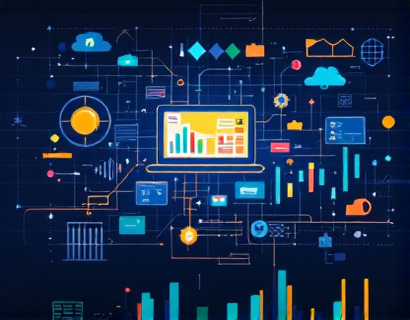Unlocking the Cosmos: Interactive Software for Astronomy Education and Exploration
In an era where technology and education intersect, the field of astronomy has witnessed a revolutionary transformation. Interactive software has emerged as a powerful tool, making the vast and intricate universe accessible to a broader audience. This article delves into the capabilities and benefits of such software, designed to transform astronomy education and exploration. For astronomy enthusiasts, educators, students, and space exploration hobbyists, these tools bridge the gap between complex celestial concepts and engaging, hands-on learning experiences.
The primary goal of this interactive software is to foster a deeper understanding of the universe, galaxy, and celestial objects. By leveraging advanced graphics, real-time data, and immersive simulations, users can explore the cosmos in ways previously unimaginable. The software is meticulously crafted to cater to diverse learners, from beginners to advanced students and professionals, ensuring that the wonders of the universe are within reach of everyone.
Immersive Learning Experiences
One of the most significant advantages of interactive astronomy software is its ability to create immersive learning environments. Users can embark on virtual journeys through the solar system, explore distant galaxies, and witness celestial events in real-time. These experiences are not just visually stunning but also educational, providing context and insights that traditional textbooks often lack.
For instance, a user can simulate a trip to Mars, observing the planet's terrain, atmosphere, and potential habitats. The software can display detailed maps, geological features, and scientific data, all presented in an interactive and engaging manner. This hands-on approach not only enhances understanding but also sparks curiosity and a deeper interest in astronomy.
Engaging Resources
Interactive software for astronomy education comes packed with a wealth of resources. These include comprehensive tutorials, interactive quizzes, and detailed explanations of astronomical phenomena. The resources are designed to be accessible and easy to understand, making complex topics like black holes, dark matter, and exoplanets more approachable.
Educators can utilize these resources to create dynamic lesson plans, incorporating multimedia elements such as videos, 3D models, and interactive diagrams. This variety keeps students engaged and helps cater to different learning styles. For example, a lesson on the life cycle of stars can include an interactive timeline, showing the stages from nebula to supernova, complete with explanatory notes and visual aids.
Comprehensive Tools
The software offers a suite of comprehensive tools that empower users to conduct their own astronomical research and exploration. These tools range from planetarium programs that simulate the night sky to data analysis platforms that process and visualize astronomical data.
Planetarium software allows users to view the night sky from any location on Earth, at any time, and observe celestial events such as planetary alignments and meteor showers. This feature is particularly useful for educators who want to demonstrate celestial mechanics to their students. Data analysis tools, on the other hand, enable users to work with real astronomical data, fostering skills in data interpretation and scientific inquiry.
Real-Time Data and Updates
Another critical feature of modern astronomy software is its ability to integrate real-time data from observatories and space agencies. This ensures that users always have access to the most current information about celestial events and discoveries. For example, the software can alert users to upcoming eclipses, planetary transits, or new discoveries by telescopes in space.
This real-time data integration is invaluable for both educators and students. Educators can use it to provide up-to-date examples in their lessons, while students can stay informed about the latest developments in the field. This connection to the global astronomical community enhances the learning experience and keeps users motivated to explore further.
Collaborative Learning Opportunities
Interactive astronomy software often includes features that promote collaborative learning. Users can join virtual observatories, participate in citizen science projects, and collaborate on research initiatives. These collaborative platforms allow individuals from around the world to work together, share findings, and contribute to the collective understanding of the universe.
For students, this means the opportunity to engage in meaningful projects that go beyond the classroom. They can contribute to real scientific research, working alongside professionals and peers. This not only enhances their learning but also prepares them for future careers in science and technology.
Customizable and Scalable
The software is designed to be highly customizable and scalable, catering to a wide range of needs and levels of expertise. Whether a user is a beginner looking to learn the basics or an advanced researcher delving into complex simulations, the software adapts to their requirements.
For educators, this means the ability to tailor lessons to the specific needs of their students. They can adjust the complexity of the content, choose from a variety of teaching modules, and incorporate personalized assessments. For students, the software provides a learning path that can be adjusted as their knowledge and interests evolve.
Enhancing Scientific Literacy
By making astronomy more accessible and engaging, interactive software plays a crucial role in enhancing scientific literacy. It demystifies complex concepts and shows the relevance of astronomy to everyday life. Users gain a better understanding of the universe's structure, the processes that govern celestial phenomena, and the methods scientists use to study the cosmos.
This enhanced scientific literacy has far-reaching benefits. It fosters a more informed and curious public, encourages critical thinking, and inspires the next generation of scientists and explorers. As users become more knowledgeable, they are better equipped to participate in discussions about space policy, environmental issues, and technological advancements.
Inspiring Curiosity and Passion
Perhaps the most profound impact of interactive astronomy software is its ability to inspire curiosity and passion for science. By providing an engaging and interactive platform, the software ignites a sense of wonder about the universe. Users are motivated to ask questions, seek answers, and explore further.
For many, this initial spark leads to a lifelong interest in astronomy and science. The software serves as a gateway to a deeper understanding of the cosmos, encouraging users to continue their educational journey long after they have explored the virtual skies. Whether through virtual tours, interactive simulations, or real-time data, the software keeps the excitement of discovery alive.
Conclusion
Interactive software for astronomy education and exploration represents a significant leap forward in making the universe accessible and understandable. It offers immersive learning experiences, engaging resources, and comprehensive tools that cater to a diverse audience. By bridging the gap between complex celestial concepts and engaging education, this software fosters a deeper understanding and ignites curiosity about the vast universe.
For astronomy enthusiasts, educators, students, and space exploration hobbyists, these tools are invaluable resources that enhance knowledge and fuel passion. As technology continues to advance, the potential for even more innovative and impactful astronomy software is immense. The future of astronomy education is bright, and interactive software is at the forefront of this exciting journey.










































